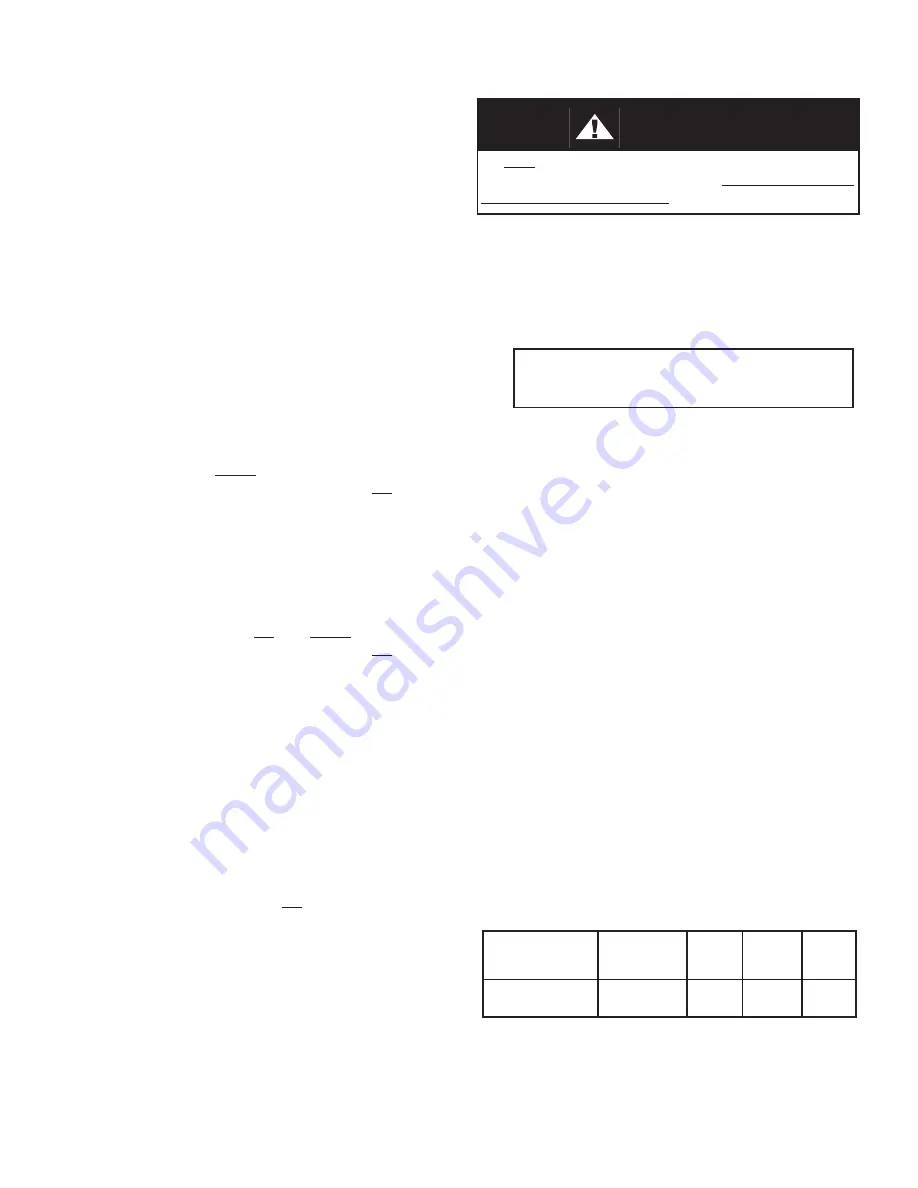
IOM-48
14
Benchset
Free
Part
Range
Qty. of Height * Coating
Number
psig (Barg)
Springs in (cm)
Color
830-H2-5-R9069-95
5-15
6
5.60
Grey
(0.34-1.03)
(14.23)
* Acceptable ± 1/8" (± 3 mm)
23. Place heavy duty wheel bearing grease as
speci
fi
ed previously onto the stem-end ball
(64). Engage the gland (67) into the upper
casing (1) female opening. Align tapped open-
ing for self-tapping slotted-head screw (65).
24. Install slotted-head screw (65) fully.
G. Adjusting Screw Assembly and Actuator Plug
Maintenance:
1. Reference Item Number drawing at end of the
IOM.
2. Determine the portion of the text of Sub sec-
tion F. above that would apply to the adjust-
ing screw assembly (ASA) counterpart of the
manual handwheel operator (MHWO) as sem-
bly, and complete maintenance in a sim i lar
procedure.
NOTE
:
Adjusting screw assembly
(ASA) is ONLY applied to reverse-action,
ATO-FC Ranger QCT units (AA) (BA)
.
3. Determine the portions of the text of Sub sec tion
F. previous that would apply to the ac tu a tor
plug (67) coun ter part of the manual handwheel
operator (MHWO) as sem bly, and complete
maintenance in a similar procedure.
NOTE:
Actuator plug (67) may be applied on all Pre-
mier units (AA) (BA) and ONLY direct-action,
ATC-FO Ranger QCT units (AA) (BA).
H. Replacement of Range Springs:
1. Replacement of actuator assembly (AA)
range springs (11) requires what is essen-
tially a complete actuator (AA) disassembly.
It is rec om mend ed that the range spring (11)
re place ment should include:
a. diaphragm (6) replacement
b. O-ring(s) (62) (63) replacement
c. threadseal (61) replacement.
2. Separate the actuator assembly (AA) from
the body assembly (BA) as described in this
Sec tion, V.B.1 through V.B.9.
3. Push piston (3) downwards by:
a. manual handwheel operator (MHWO)
being rotated CW (viewed from above
handwheel (58.1)) approximately one-half
of full travel.
b. pressurize actuator to approximately one-
half of the stated benchset range; i.e. for
5-15 psig (.34-1.03 Barg) pressurize to
ap prox i mate ly 10 psig (.69 Barg).
Do NOT stick hand or
fi
ngers into the arm housing (4)
when the actuator is pressurized. ONLY USE TOOLS
WITHIN ARM HOUSING (4).
4. Place a wrench on the hex surface of the ac-
tu a tor’s stem/pushrod (10). Rotate the push
rod (10) CCW (viewed from lower L.H. rod
end (9)); keep track of number of revolutions
to disengage from upper R.H. rod end (8) in
box below.
Number of revolutions of push
rod (10) re quired to disengage
from upper R.H. rod end (8). ___________
5. Allow piston (3) to travel upwards by:
a. manual handwheel operator (MHWO)
being rotated CCW (viewed from above
handwheel (58.1)) fully out/up.
b. releasing air pressure as applied per 3.b.
above; remove the air supply from ac tu a tor
upper casing (1).
6. Orient actuator assembly (AA) with upper cas-
ing (1) on top side. Disassemble the ac tu a tor
assembly (AA) to the point of di a phragm (6)
replacement as described in this Section V.E.1
through V.E.11.
7. Place a matchmark at
fl
ange of lower casing
(2) and correspondingly at piston (3). Lift off
piston (3) in a vertical direction to prevent
tipping range springs (11) over. Set piston
(3) on work surface upside down.
8. Remove all range springs (11) and set in a row
side-by-side. Inspect for any difference in the
spring (11) height or verticality. Replace any
abnormal spring(s) (11). Re place any springs
(11) that show cracks, nicks, damaged epoxy
coating, corrosion, etc. Inspect springs (11)
using data in table below as the “normal”:
WARNING










































